This article offers valuable insights for parents about automatic reinforcement in Applied Behavior Analysis (ABA) therapy. It highlights how important it is for parents to be involved in understanding and addressing behaviors influenced by automatic reinforcement. By collaborating with therapists and tailoring interventions, parents can significantly boost treatment outcomes for their children. Let’s explore this together! 🌟
Understanding the nuances of automatic reinforcement in Applied Behavior Analysis (ABA) therapy can truly be a game-changer for parents looking to support their children's development. 🌟 This article dives into ten key insights that shine a light on how automatic reinforcement works and why it’s essential for effective intervention strategies. As caregivers explore these insights, they might find themselves asking: how can recognizing and using automatic reinforcement change their approach to their child's behavioral challenges?
Exploring this question can open up new pathways for collaboration with therapists, ultimately enhancing the therapeutic journey for both children and their families. Let’s explore this together!
At Rori Care, we understand that navigating ABA treatment can feel overwhelming for families. That’s why we take a personalized approach, placing special emphasis on automatic reinforcement aba. Our dedicated clinicians are here to guide your family through comprehensive assessments, ensuring we identify each individual's unique needs. This way, we can create tailored interventions that truly enhance involvement and effectiveness.
When we focus on personalized care, we ensure that the strategies we use align perfectly with each child's distinct behavioral patterns. This leads to better outcomes during treatment sessions. Did you know that ABA intervention boasts a remarkable success rate of 89%? In fact, 47% of children who undergo this treatment become indistinguishable from their peers! Plus, organizations like the US Surgeon General and the American Psychological Association recognize ABA intervention as an evidence-based best practice.
Family involvement is crucial for success! We encourage parents to engage actively in their children's care, reinforcing learning at home. By paying attention to the nuances of each child's actions, Rori Care maximizes the potential for success in automatic reinforcement aba treatment. We strive to create a nurturing environment where children can truly thrive.
To make things even better, we leverage AI-driven progress report automation, freeing up 50% more time for your child's care. This allows our clinicians to focus more on personalized support while equipping caregivers with essential ABA principles and strategies to help their children achieve their behavioral goals. Let’s explore this journey together—we’re here to help you every step of the way!
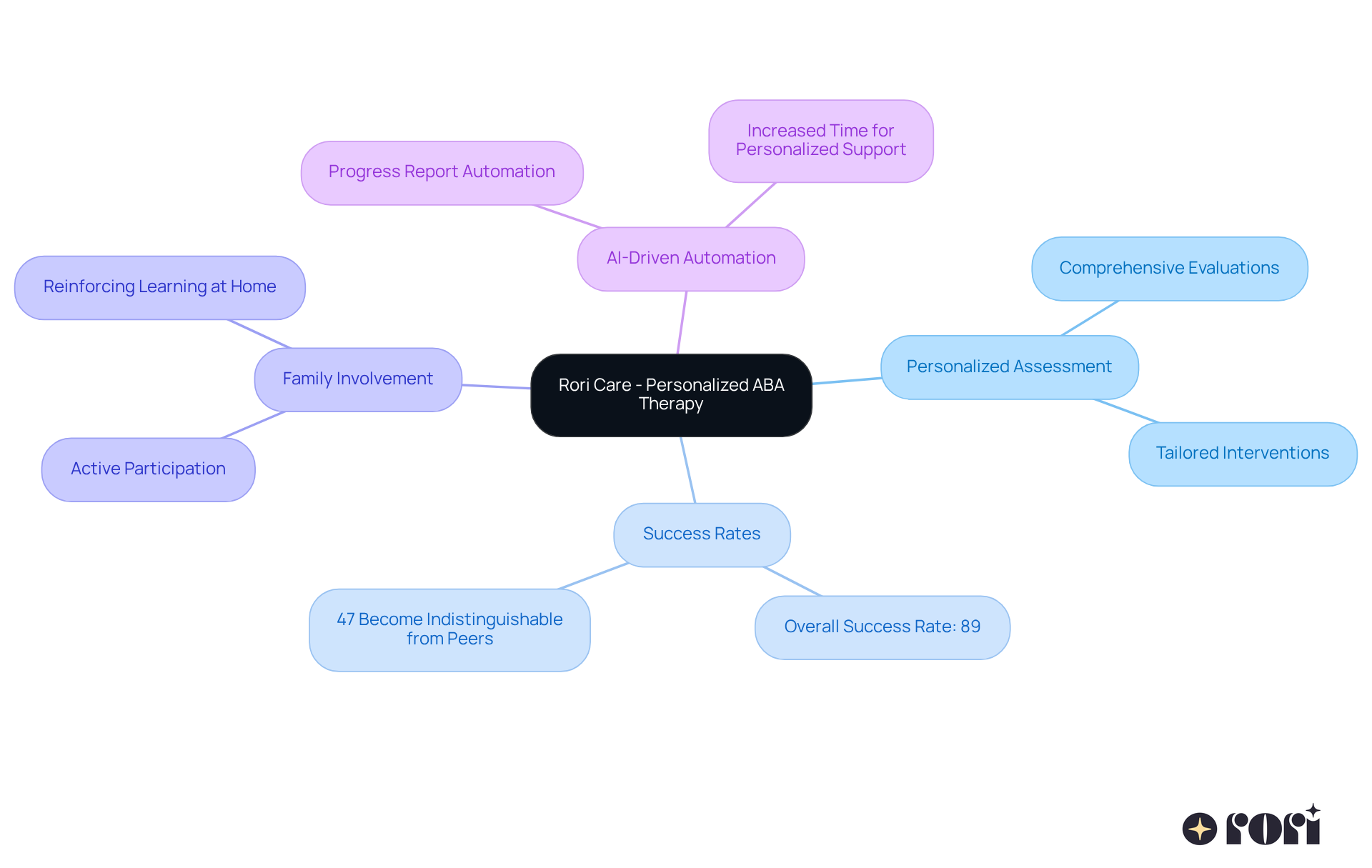
Automatic reinforcement is all about those actions that feel good just because you’re doing them. It means the satisfaction comes from the action itself, without needing anything from the outside. This idea of automatic reinforcement ABA is crucial in Applied Behavior Analysis (ABA) therapy, helping us understand why some actions persist. Research shows that around 25-40% of challenging behaviors in individuals with developmental disabilities have the automatic reinforcement aba purpose, making it a common functional role in clinical settings.
When parents grasp the concept of automatic reinforcement, they can better understand what motivates their children. This insight can make a big difference in addressing these behaviors. For instance, you might notice your child engaging in self-stimulatory behaviors like hand-flapping or rocking, especially when they’re tired or overwhelmed. Recognizing these patterns helps parents use strategies that promote positive behaviors while reducing those that aren’t as helpful.
At Rori Care, our care engine does functional analysis for specific behaviors and skills, providing automatic progress reports for clinicians to review. This ensures that the interventions are tailored to each person’s unique needs, strengths, and challenges. Plus, recent studies suggest that interventions like Non-Contingent Reinforcement (NCR)—which involves giving the desired stimulation through automatic reinforcement ABA actions on a schedule—can significantly improve the quality of life for those receiving services, cutting down automatically reinforced behaviors by 50-70%!
With this knowledge, parents can collaborate with therapists to create personalized interventions that cater to their child’s specific needs. This teamwork can really enhance autism treatment. Additionally, parents can share valuable insights about behaviors outside of therapy sessions, which is crucial for refining intervention strategies. By getting involved, caregivers gain access to ABA principles and techniques that support their child’s behavioral goals, fostering a collaborative atmosphere that encourages informed decision-making and better outcomes.
Let’s explore this together! We’re here to help you every step of the way!
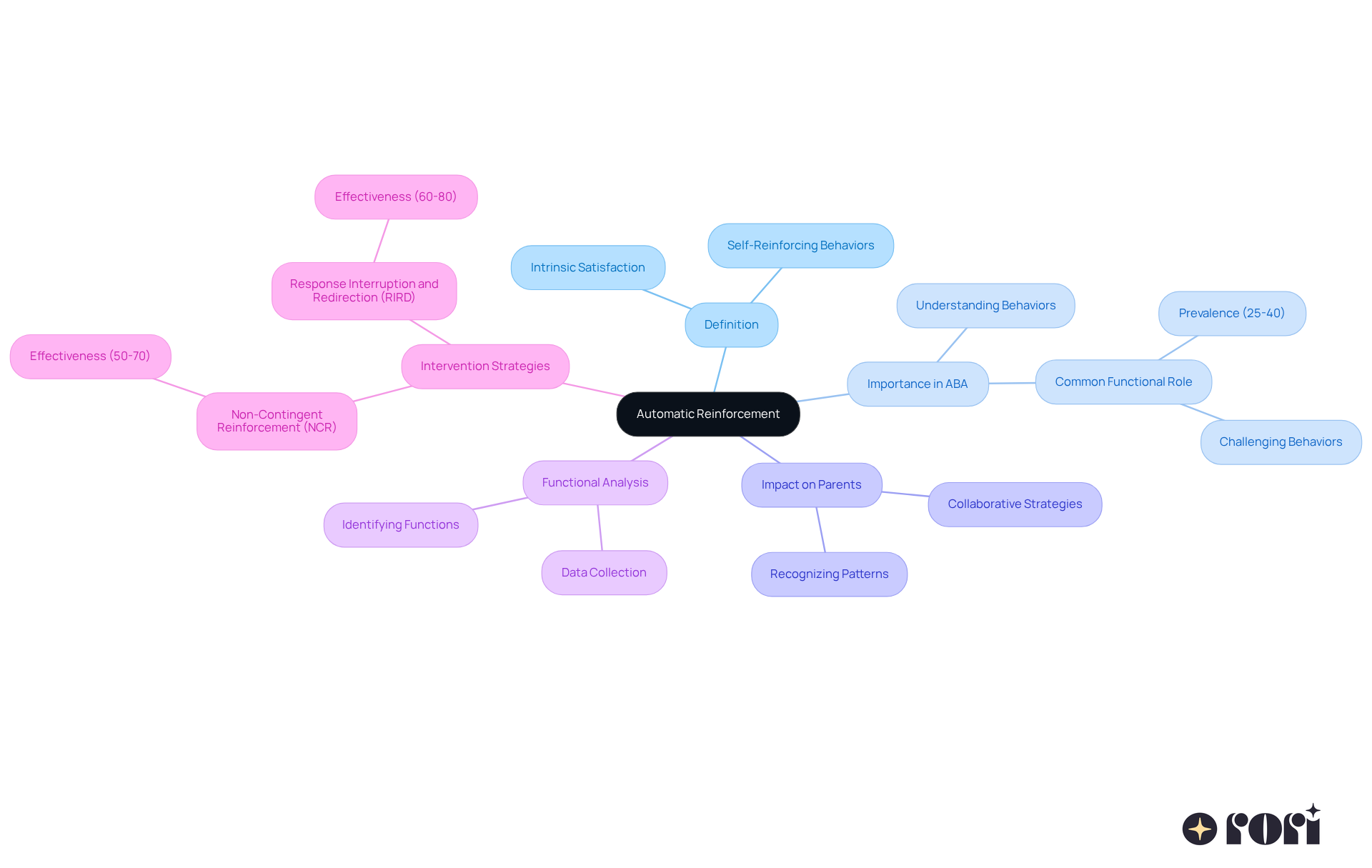
Many kids with autism engage in sensory stimulation activities, like hand-flapping or rocking. These behaviors often function as automatic reinforcement ABA, providing sensory fulfillment or relief from overwhelming stimuli. As parents, it’s important to recognize that ABA treatment is all about your child. By monitoring their sensory preferences and triggers, you can gain insights into when and why these behaviors occur. This awareness can lead to more effective interventions that cater to their sensory needs, empowering you with automatic reinforcement ABA principles and strategies to support your child’s development.
Did you know that early intensive behavioral intervention (EIBI) can significantly boost learning, verbal, and social skills in children with autism? That’s why it’s crucial for parents to actively participate in their child’s therapy journey. Let’s explore this together! Your involvement can make a world of difference in their growth and happiness.
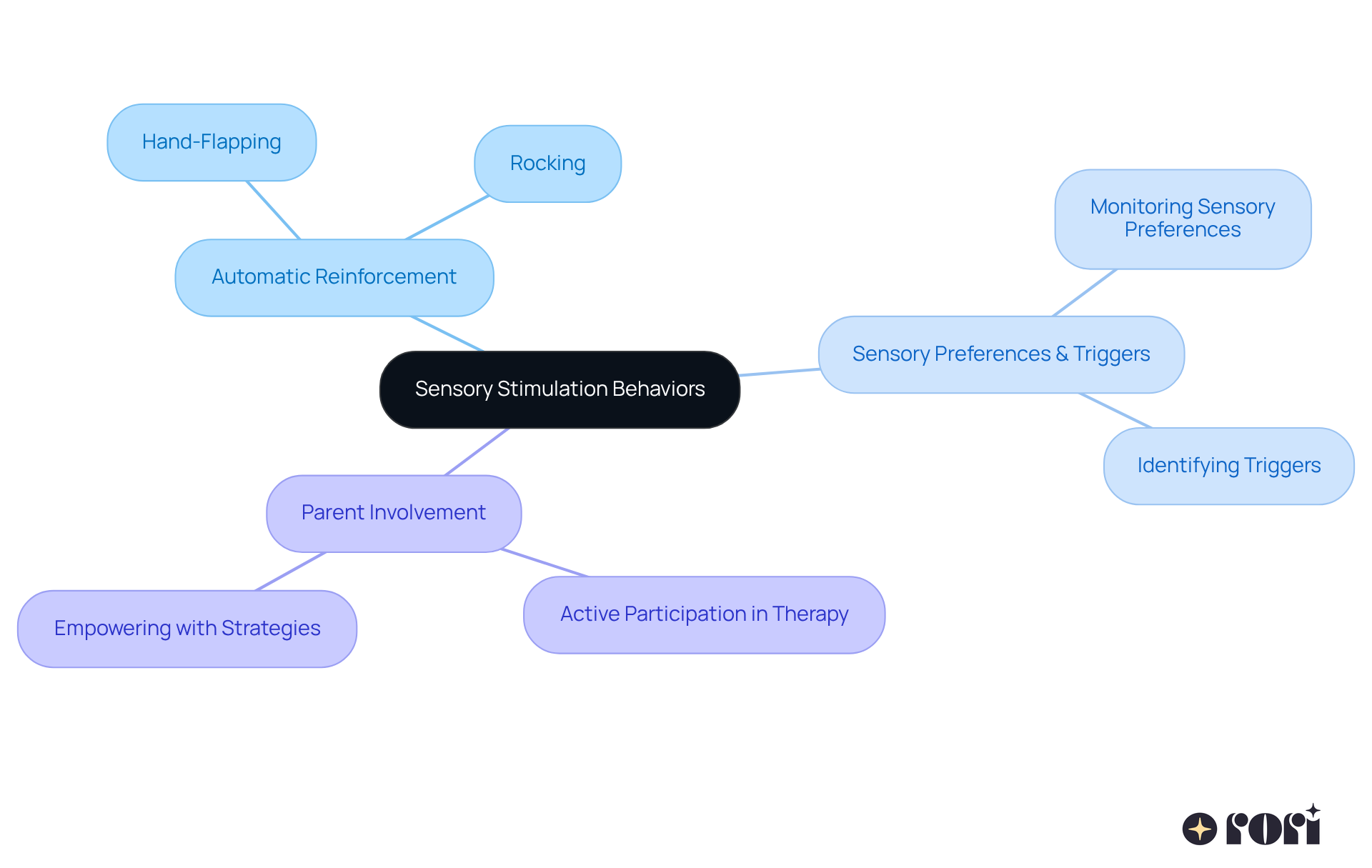
Repetitive actions, like spinning or arranging objects, often provide comfort and predictability for children. They can provide automatic reinforcement aba, which is really important for kids. Did you know that around 80% of individuals on the autism spectrum engage in some form of repetitive activity? This can be a helpful coping mechanism for anxiety and sensory overload. Understanding this connection can really help parents approach these behaviors with empathy, recognizing how they offer a sense of security.
Child psychologists highlight the need for strategies that redirect or replace these behaviors with more functional alternatives. Techniques like using visual schedules can provide structure, while clear communication sets expectations. Introducing relaxation methods can also help manage anxiety. When caregivers are actively involved, they create a consistent and supportive atmosphere that maximizes the impact of these interventions.
By acknowledging the comfort that comes from repetitive actions, parents can better support their children in navigating their unique experiences. A great first step for caregivers is to establish a visual timetable at home. This simple tool can help your little one transition between activities smoothly. Let’s explore this together! By fostering this understanding, we can create a nurturing environment for our children.
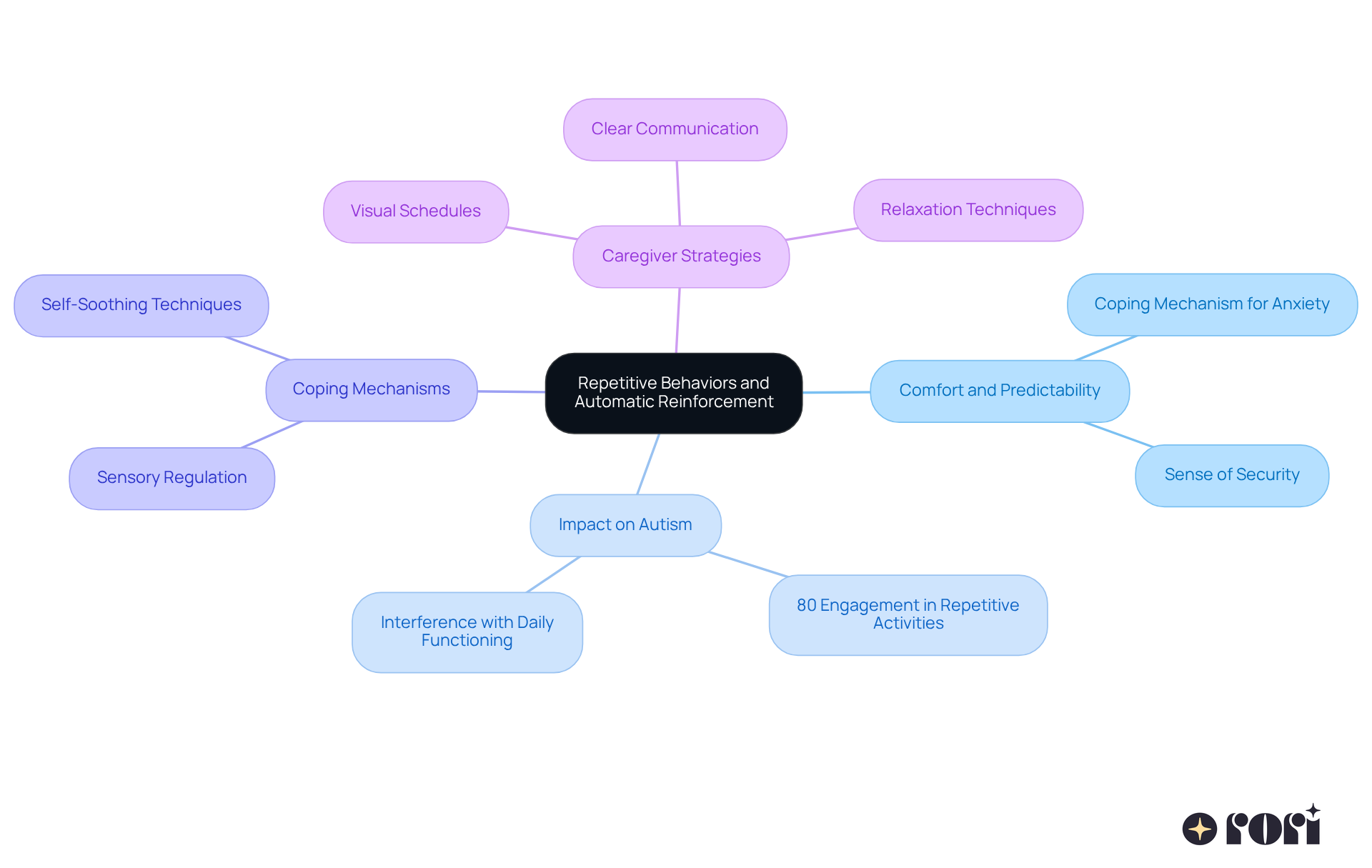
To effectively identify automatic reinforcement, parents should observe their child's actions across different situations and jot down when these actions occur. Keeping a journal of behaviors is vital for spotting patterns and triggers, which helps in understanding your little one's conduct better. For example, a case study showed how a young person's repetitive hand-flapping behavior was tied to sensory satisfaction, documented in a behavior journal. This record allowed therapists to create tailored interventions addressing the individual's specific sensory needs, highlighting the importance of adaptive treatment plans based on automatic reinforcement, ABA, progress reports, and caregiver involvement.
Working closely with therapists to review these observations can lead to more personalized strategies that support the child's development. As behavior analysts note, consistent data collection through journals is crucial for tracking progress and refining interventions, ultimately creating a nurturing environment for children with autism. Plus, using the ABC (Antecedent-Behavior-Consequence) method can help parents understand the context of actions, further enhancing their observations.
As B.F. Skinner wisely said, 'the consequences of an act affect the likelihood of its happening again.' This underscores the importance of recording behaviors to inform future interventions. Parents are encouraged to set aside time each day to reflect on their child's actions and update their journals, ensuring they capture relevant details to discuss with therapists. This active involvement not only empowers caregivers but also boosts their ability to support their child's behavioral goals through informed decision-making and improved outcomes. Let’s explore this together!
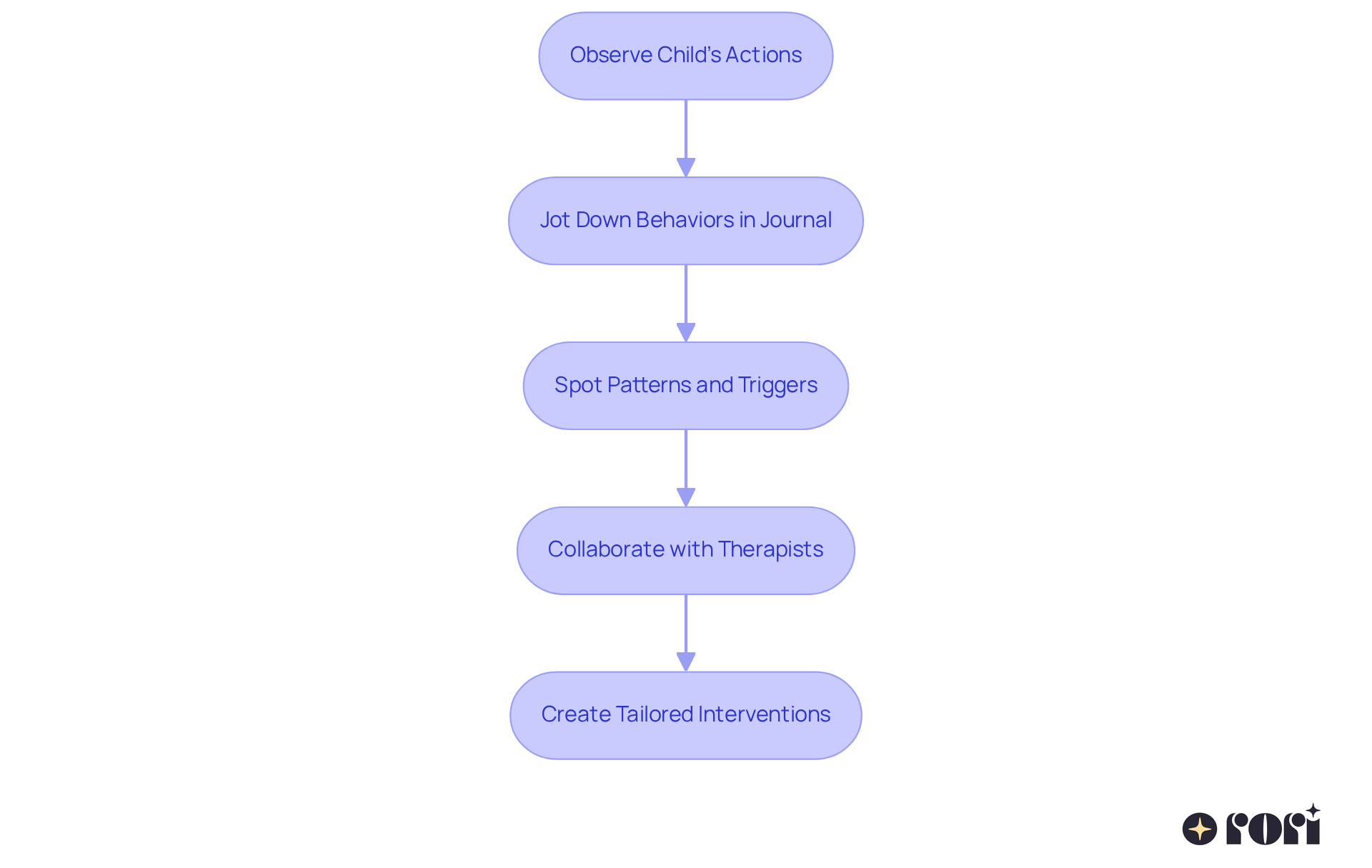
Customized strategies in ABA therapy are essential for changing or replacing actions that are supported by automatic reinforcement ABA. This approach often includes offering alternative sensory activities or teaching substitute actions that meet the same sensory needs. By personalizing strategies to fit each child's unique requirements, therapists can ensure that interventions are not just relevant but also effective, fostering positive changes.
For instance, incorporating sensory-rich activities can engage children in meaningful ways, enhancing their overall therapeutic experience. Activities like sensory bins or textured materials provide the necessary stimulation while promoting preferred behaviors. Plus, our program development service focuses on evidence-based strategies, making sure that the methods we use are rooted in the latest research.
This tailored approach not only addresses the specific sensory needs of children but also helps them thrive in their environments. It’s all about continuous assessment and adjustments made by qualified analysts to ensure the best outcomes. And let’s not forget about our care engine, which conducts functional analyses for target actions and skills, generating automatic reinforcement aba in the form of progress reports for clinician evaluation. This feature significantly boosts the overall efficiency of the treatment.
We’re here to help you every step of the way! If you have any questions or want to share your experiences, feel free to reach out. Let’s explore this together!

Tracking progress in ABA treatment is super important for understanding how often and in what context automatic reinforcement actions happen. By collecting data in a systematic way—like frequency recording, duration recording, latency recording, and interval recording—therapists can really evaluate how effective their interventions are and make informed adjustments when needed. For example, frequency recording helps therapists count how often specific behaviors occur, while ABC data looks at what happens before and after these behaviors.
Regular progress reviews ensure that strategies stay relevant and boost the overall effectiveness of therapy. Research shows that gathering data regularly leads to better outcomes, with studies revealing that 89% of kids receiving intensive ABA treatment show positive results. This data-driven approach fosters teamwork between therapists and families, making sure that interventions are tailored to each child's unique needs and promoting lasting progress over time.
Rori Care’s behavior care engine is a key player in this process, automatically updating behavior intervention and skill acquisition plans after each session based on the progress made. This adaptive method, combined with active caregiver participation, has led to significant improvements in 90% of youth when the suggested hours are fully applied. Plus, with advanced AI technology, we can automatically create progress reports, freeing up 50% more time for direct care.
As one clinician put it, 'Data gathering is crucial for understanding a young person's growth and enhancing intervention strategies.' Using visual tools like graphs and bar charts can also help make findings easy to understand and interpret. Let’s explore this together!

Parents play a vital role in using automatic reinforcement ABA techniques at home, which can greatly influence their children's development. By consistently reinforcing positive behaviors and giving quick feedback, parents help transfer the skills learned in therapy to everyday life. Engaging in open conversations with therapists about their child's progress and any challenges they face fosters a collaborative approach to management. This teamwork not only boosts the effectiveness of ABA treatment but also empowers parents to be active participants in their child's growth.
As one therapist pointed out, 'When parents get involved in managing behaviors, it creates a nurturing environment that leads to better outcomes for kids.'
The influence of parental involvement in automatic reinforcement ABA therapy is remarkable; studies show that children whose parents are actively engaged in their treatment often achieve greater success in developing essential skills.
So, let’s explore this together and see how you can make a difference!

When it comes to addressing automatic reinforcement in ABA, effective interventions often involve noncontingent reinforcement methods. This means offering favored activities without any specific actions required. It’s a wonderful way to create a positive environment that encourages engagement without the stress of performance. Research shows that when these methods are consistently applied, they can significantly reduce unhelpful behaviors while promoting beneficial alternatives.
Another key strategy is response interruption techniques. These allow caregivers to gently redirect actions before they escalate. By stepping in early, we can help maintain a supportive atmosphere that’s perfect for learning and growth. It’s encouraging to know that statistics reveal 90% of individuals show significant progress when caregivers actively participate in therapy. This really highlights how important these strategies are for effective management.
You can see real-world examples of automatic reinforcement in ABA in structured settings. Imagine young individuals being given access to their favorite activities, like playtime or sensory breaks, no matter what they do. This not only boosts positive interactions but also helps them learn to self-regulate their actions. Ultimately, it leads to improved social skills and greater independence.
Let’s explore this together! We’re here to help you every step of the way!

Cooperation between parents and ABA therapists can significantly enhance the effectiveness of automatic reinforcement ABA methods. These techniques are all about encouraging desired behaviors by offering rewards that kids find inherently rewarding. When parents understand ABA principles and strategies, they’re better equipped to share their insights and observations. This creates essential context that helps shape treatment plans, ensuring that interventions are tailored to each child’s unique needs.
This informed decision-making leads to a cohesive approach, allowing for consistency between home and therapy settings. Studies have shown that kids whose parents actively participate in their treatment tend to progress faster and retain positive behaviors better. Clinicians often emphasize that teamwork is crucial in ABA therapy. It not only enhances the therapeutic process but also empowers families to apply strategies at home.
By tapping into parent insights and the knowledge gained through caregiver education, therapists can fine-tune automatic reinforcement ABA techniques. This collaboration can lead to even more successful outcomes for children. Ultimately, this joint effort fosters a supportive environment for healing and growth, making it a key component of effective autism care. Let’s explore this together and see how we can make a difference!
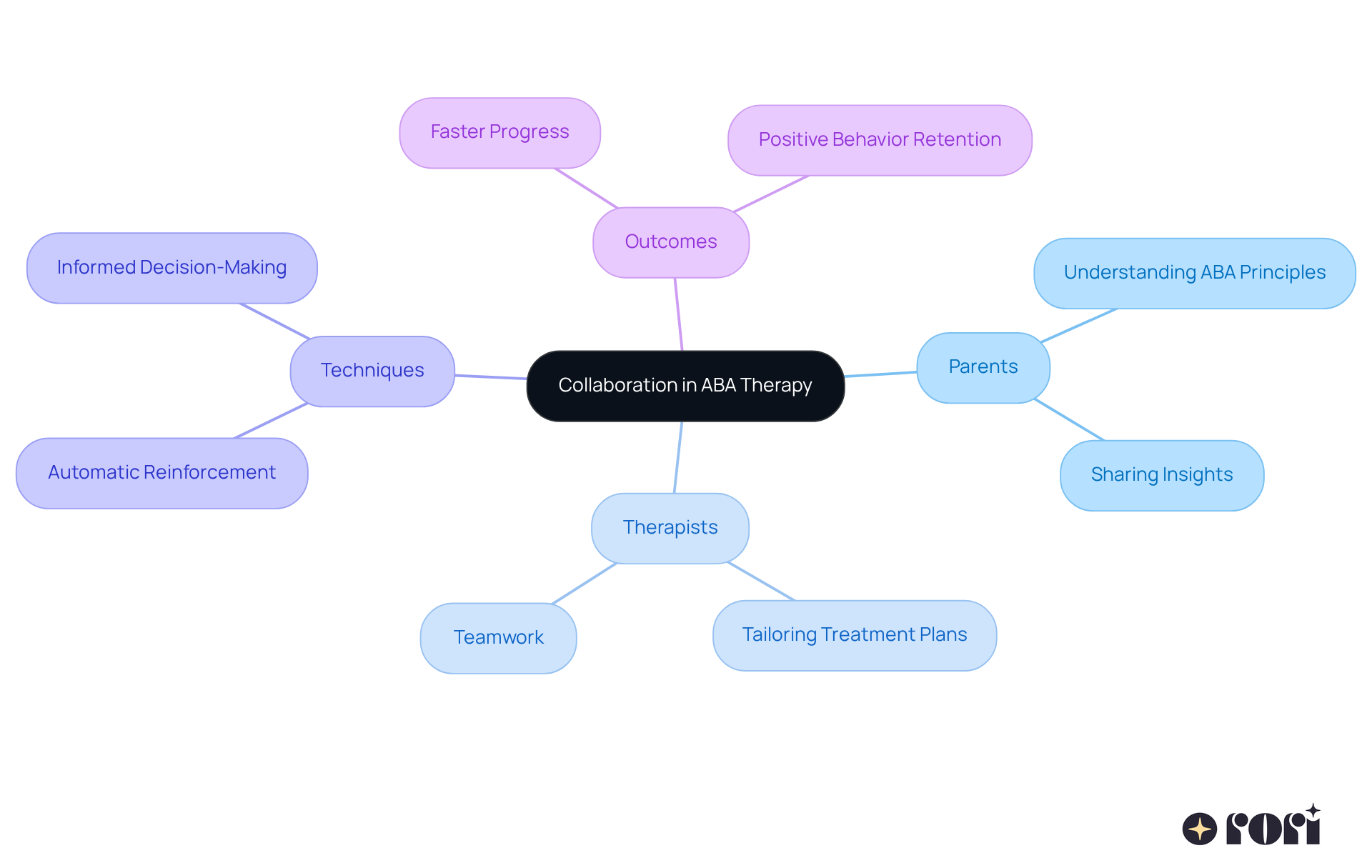
Understanding automatic reinforcement in ABA therapy is so important for parents who want to support their children's development effectively. When caregivers recognize how certain behaviors bring intrinsic satisfaction, they can tailor their approaches to foster positive change. This personalized attention not only enhances the therapeutic process but also empowers families to actively engage in their child's journey toward growth.
The article shares several key insights, such as:
It also highlights strategies that can be used to identify and address automatic reinforcement. By actively participating in their child's treatment and collaborating with therapists, parents can significantly influence outcomes, ensuring that interventions are relevant and effective.
Ultimately, the journey of understanding and applying automatic reinforcement in ABA therapy is a collaborative one. It invites parents to embrace their role as active participants, using the insights gained to create a nurturing environment that encourages their child's progress. Engaging in this process not only benefits the child but also fosters a supportive community where families can thrive together. Let’s explore this journey together, and remember, we’re here to help you every step of the way!
What is Rori Care's approach to ABA therapy?
Rori Care takes a personalized approach to ABA therapy, focusing on automatic reinforcement and conducting comprehensive assessments to identify each individual's unique needs. This allows for tailored interventions that enhance involvement and effectiveness.
What is automatic reinforcement in ABA therapy?
Automatic reinforcement refers to actions that provide satisfaction from the action itself, without external rewards. It plays a crucial role in understanding why certain behaviors persist, especially in individuals with developmental disabilities.
How successful is ABA intervention according to Rori Care?
ABA intervention has a success rate of 89%, with 47% of children who undergo this treatment becoming indistinguishable from their peers. It is recognized as an evidence-based best practice by organizations like the US Surgeon General and the American Psychological Association.
Why is family involvement important in ABA therapy?
Family involvement is crucial for success in ABA therapy. Rori Care encourages parents to actively engage in their children's care, reinforcing learning at home and maximizing the potential for success in automatic reinforcement ABA treatment.
How does Rori Care utilize technology in their therapy?
Rori Care leverages AI-driven progress report automation, which frees up 50% more time for clinicians to focus on personalized support, while also equipping caregivers with essential ABA principles and strategies.
What types of behaviors are considered automatic reinforcement triggers?
Sensory stimulation behaviors, such as hand-flapping or rocking, are often automatic reinforcement triggers, providing sensory fulfillment or relief from overwhelming stimuli.
How can parents help in creating effective interventions for their children?
By understanding automatic reinforcement and recognizing their child's sensory preferences and triggers, parents can collaborate with therapists to create personalized interventions that cater to their child's specific needs.
What is the impact of early intensive behavioral intervention (EIBI)?
Early intensive behavioral intervention (EIBI) can significantly boost learning, verbal, and social skills in children with autism, making parental involvement in therapy crucial for their child's growth and happiness.